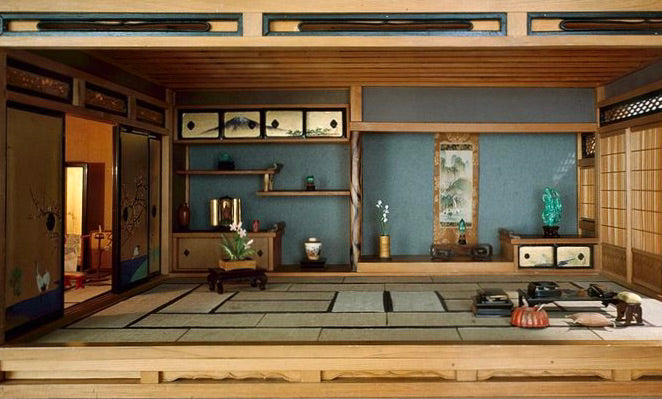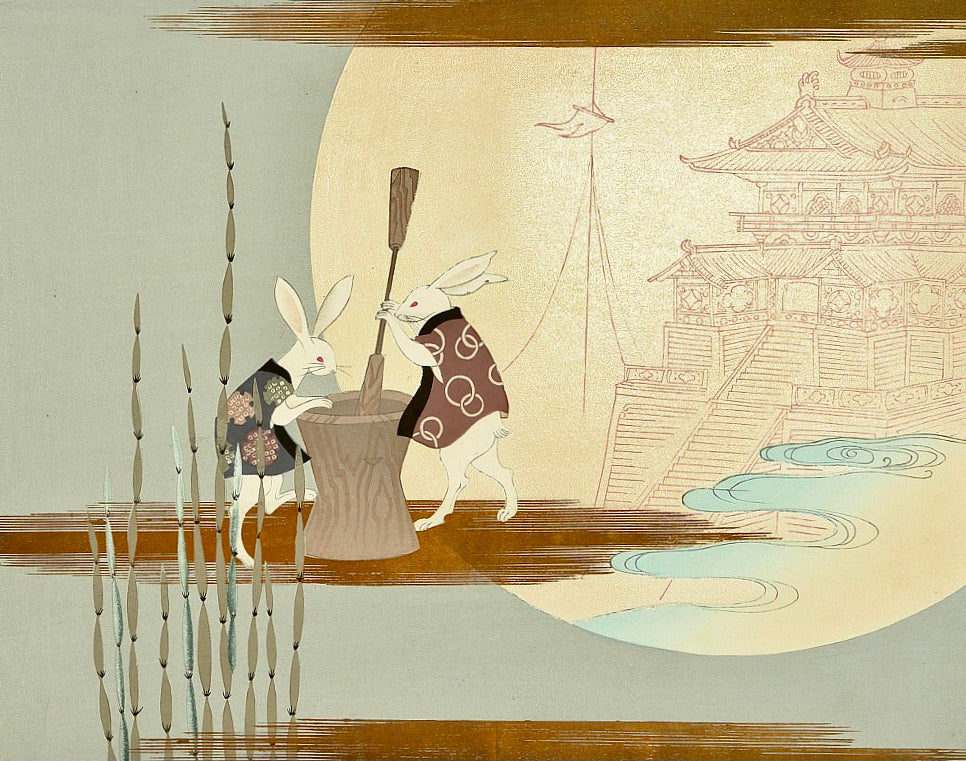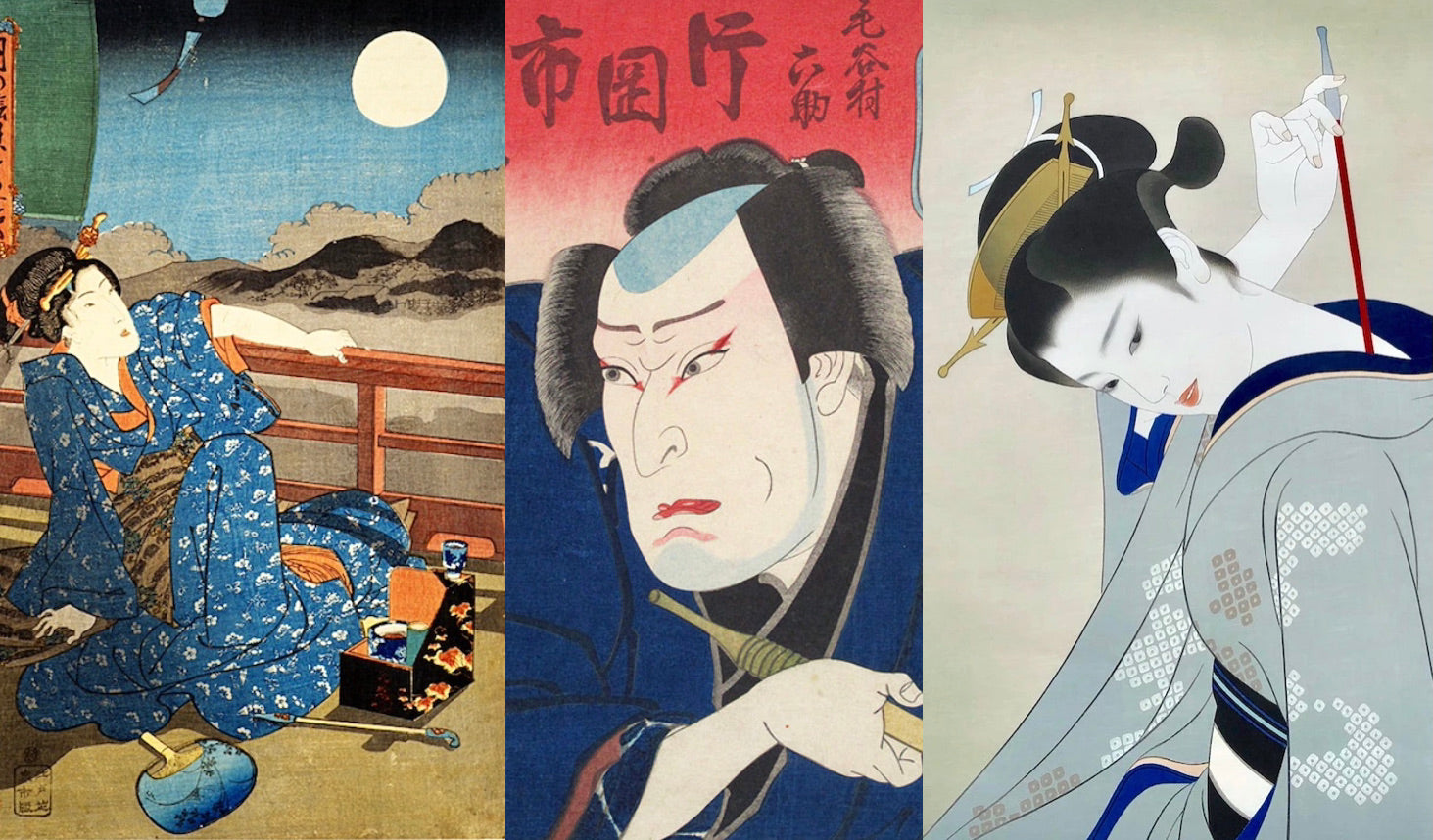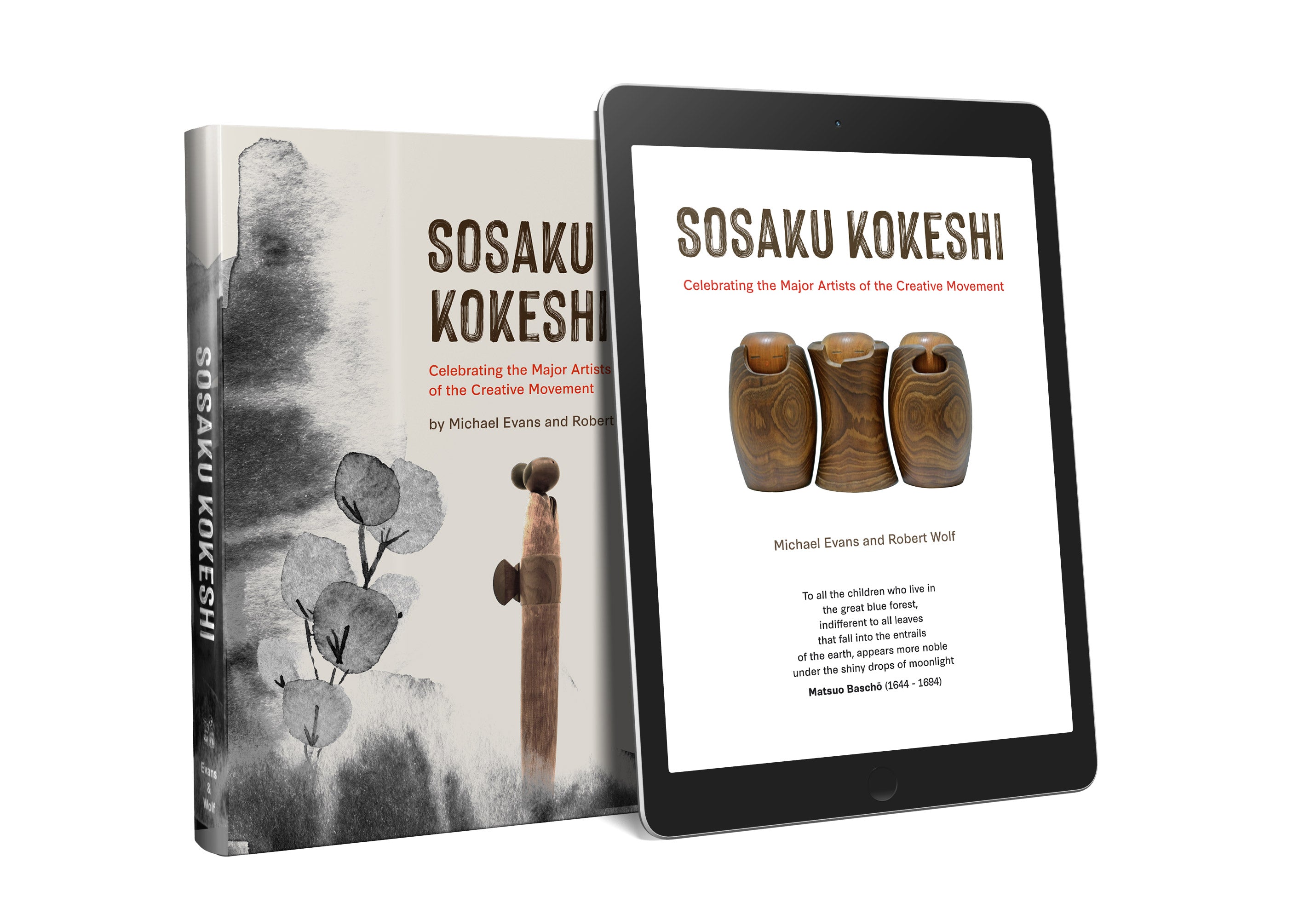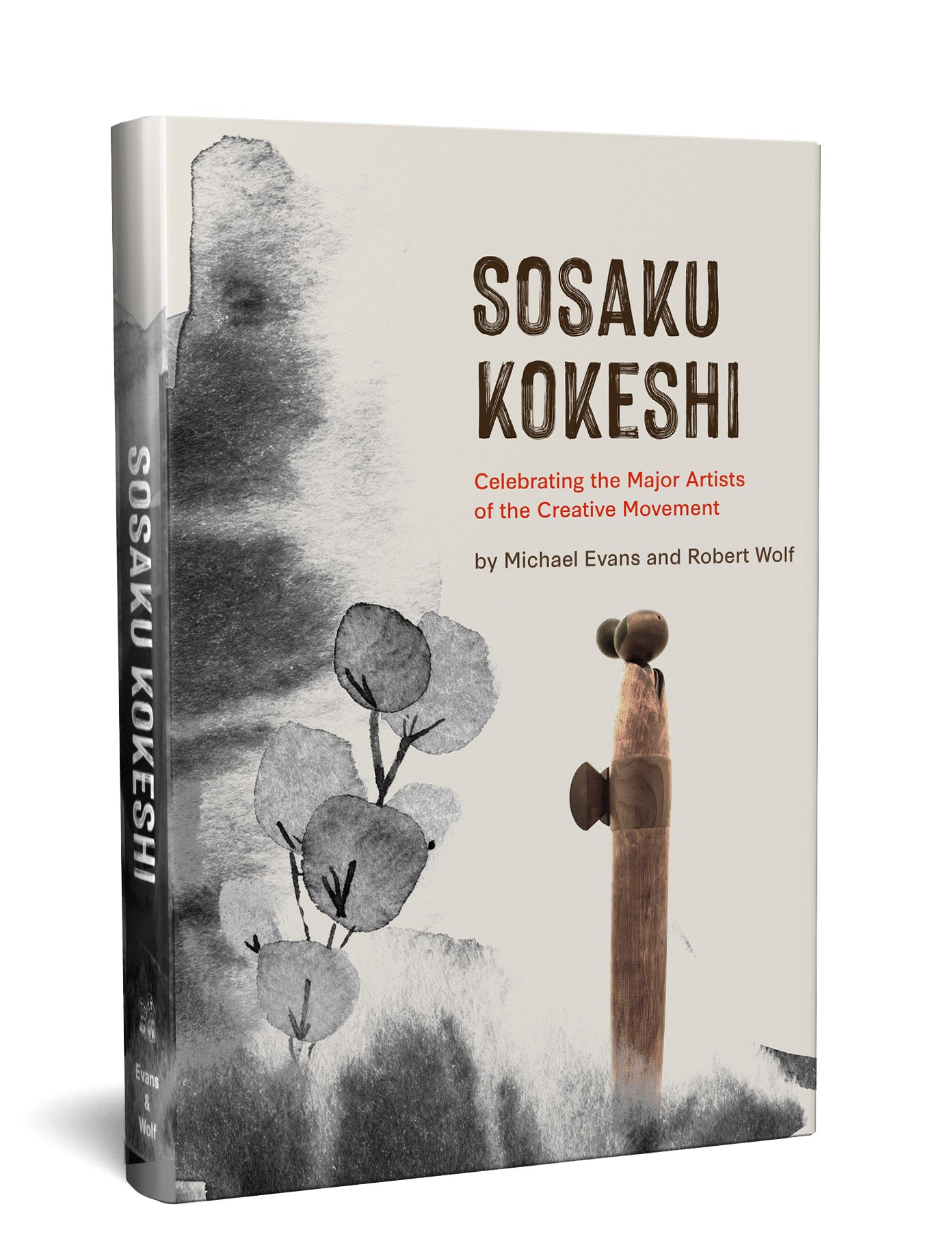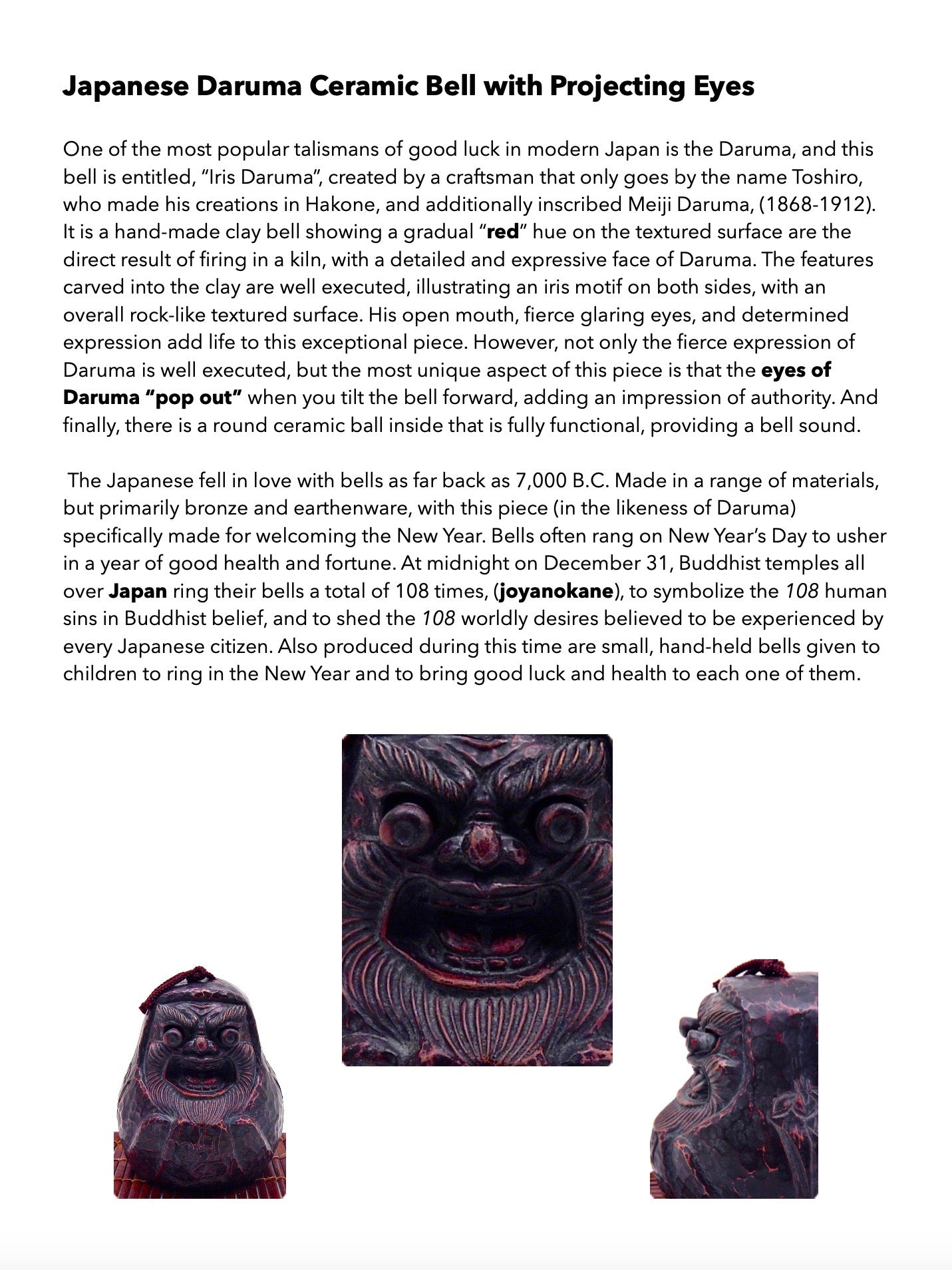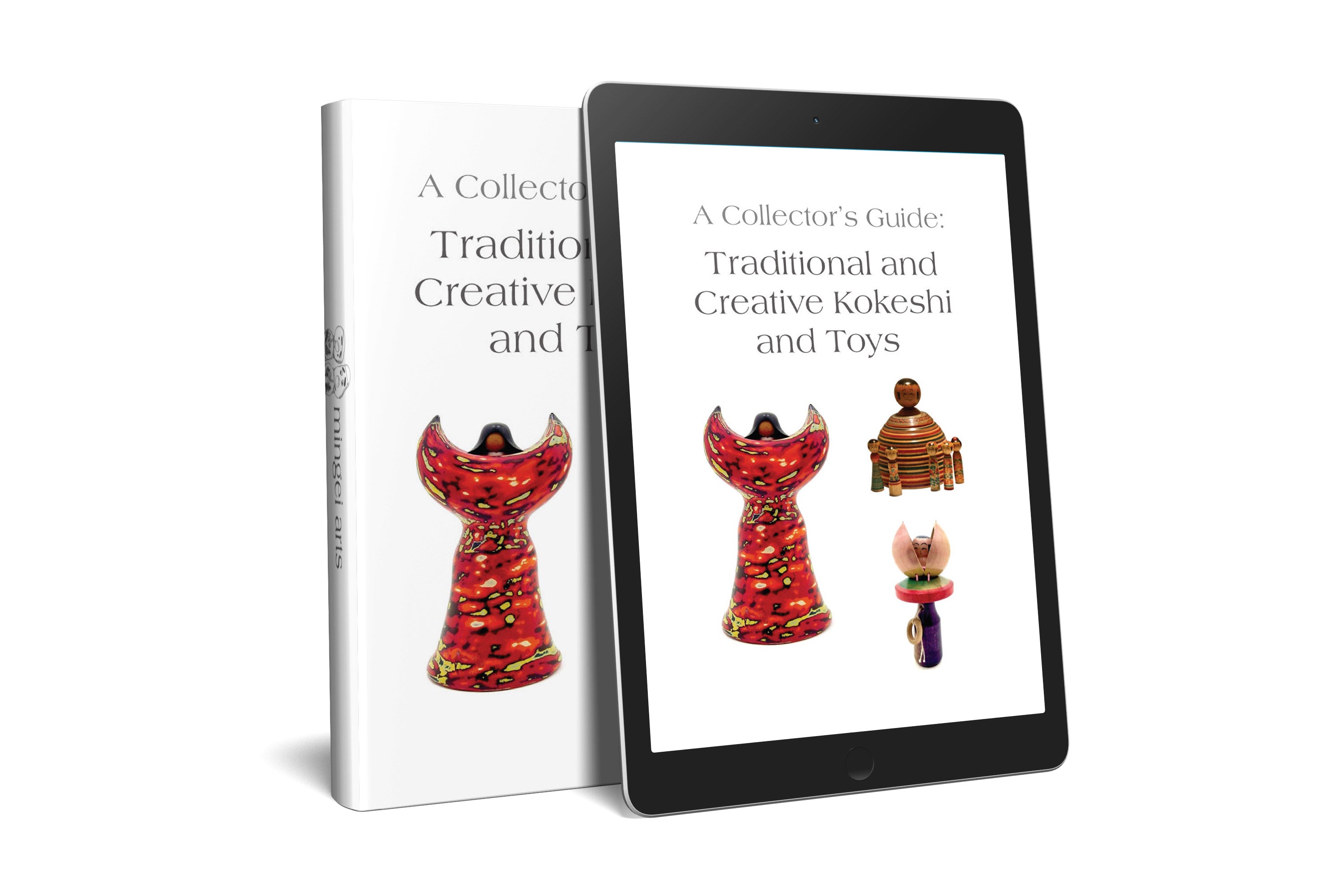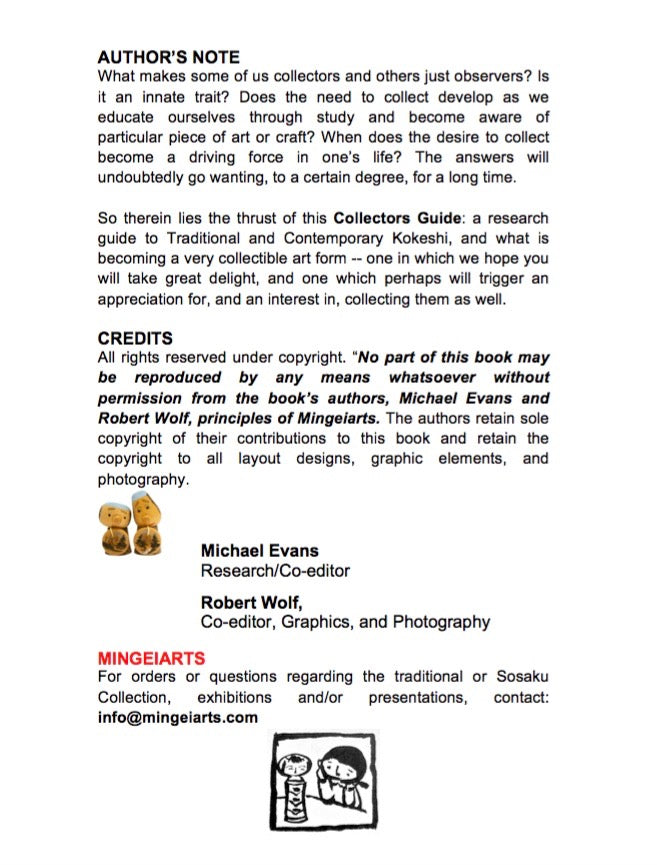The Japanese have always understood “crafts” or “applied art”, particularly as related to miniature carvings and three-dimensional forms in the areas of ceramics, metalwork, textiles, woodwork, lacquer, basketry, paper, etc.). The Japanese have also valued the craftsmen as unique individuals whose inspired talents set them apart from the rest or society. They considered artists to be craftsmen whose trade places great importance in what is termed biteki kosatsu, (aesthetic contemplation). When looking specifically at miniature objects, as this article focuses on, we see that anonymous craftsmen has produced an abundance of well-designed and skillfully fabricated handmade, palm-sized replicas, which are beautiful to look at and a pleasure to own.
Many such pieces served as both a decorative and functional purposes, or what is called, Okimono, (an ornament for display); objet d'art; or a decorative object. Some of which can be exhibited in a Tokonoma, (alcove), a scholars desk, worn or carried in one’s pocket. All such objects represent what was treasured, and depicts scenes from everyday life at a specific period of time.

The best old Japanese crafted objects often possess extraordinary beauty in their line, form, color, texture, and suitability to their function. They can include such objects as theatre masks, military armor such as Samurai swords, scabbards and Tsuba guards; Kanzashi hair pins, Inro, netsuke, small toggles, (Netsuke), used to hold items such as Inro; Kinchaku, (cloth bags), and tobacco or coin pouches; pottery figures, animal carvings, (shi-shi and dragons); wood and lacquered furniture, (Hina doll furniture); small-scaled room screens for tea ceremony; musical instruments, religious objects, figures and symbolic gateways, (i.e., Shintō Tori Gate), toys, and many miniature architectural pieces. Unfortunately, many of the old beautiful objects have become lost to the interests of contemporary Japanese, who only have a desire for modern technology. Sub-standard and perishable materials, which calls for a keen sense of quality and materials.
A keen sense of design and sensitive response to natural materials was first applied by artists located in Osaka, Kyoto, and Edo, (old Tokyo), who had access to an entire range of materials, as well as mixed and colored metals like gold, silver and bronze, and other natural materials including: ivory, (now banned), Umoregi wood, (now banned), coral, (banished), fossilized wood, (now banned), rosewood, (now banned), Yakusugi wood, (now banned), rhinoceros horn, (now banned), tortoiseshell, (now banned), boar tusk (now banned), bone, stag antler, animal teeth, clay, amber, metal, porcelain, Tagua nut, gourd, lacquer, walnut, boxwood, cherry wood, and bamboo.

The everyday world of human endeavor has been carefully observed by Japanese craftsmen who produced, for all levels of the society, objects that can be distinguished by directness, self-consciousness, ruggedness, simplicity, spontaneity, naïveté, joy, strength, richness, vitality, harmony, asymmetry, informality, and appropriateness to intended function. The quirky and humorous seldom eluded the view of the many anonymous creators of the 18th and 19th centuries. Similarly, the sensual and erotic were rendered in delightful ways. As you will see through the antique and vintage creations following this writing, objects were often humorous, and exhibited exceptional craft and finishing skills, presenting a microcosm of nature on most objects measuring only a few centimeters across, which still attracts admiration today.

In summary, the range of Japanese visual art is extensive, and some elements seem truly antithetical. Certain characteristic elements seem to be recurrent: art that is aggressively assimilative, a profound respect for nature as a model, a tendency to give compassion, and affection for all that is living, and a sensitive use and respect of materials as important vehicles of meaning.

NOTE: Technically masterful objets d’art reflect the development of religion, fashion and education throughout the history of the Japanese culture. With this in mind, our special thanks to current preservation efforts of endangered animals and materials ,(e.g. ivory and rare woods), which are discouraged for use today, if not banned altogether. However, we recognize that these earliest, technically masterful creations vivify the development of religion, fashion, and education, and should be preserved to educate the general public in supporting conservation of these rare animals, materials, and historical artifacts.






